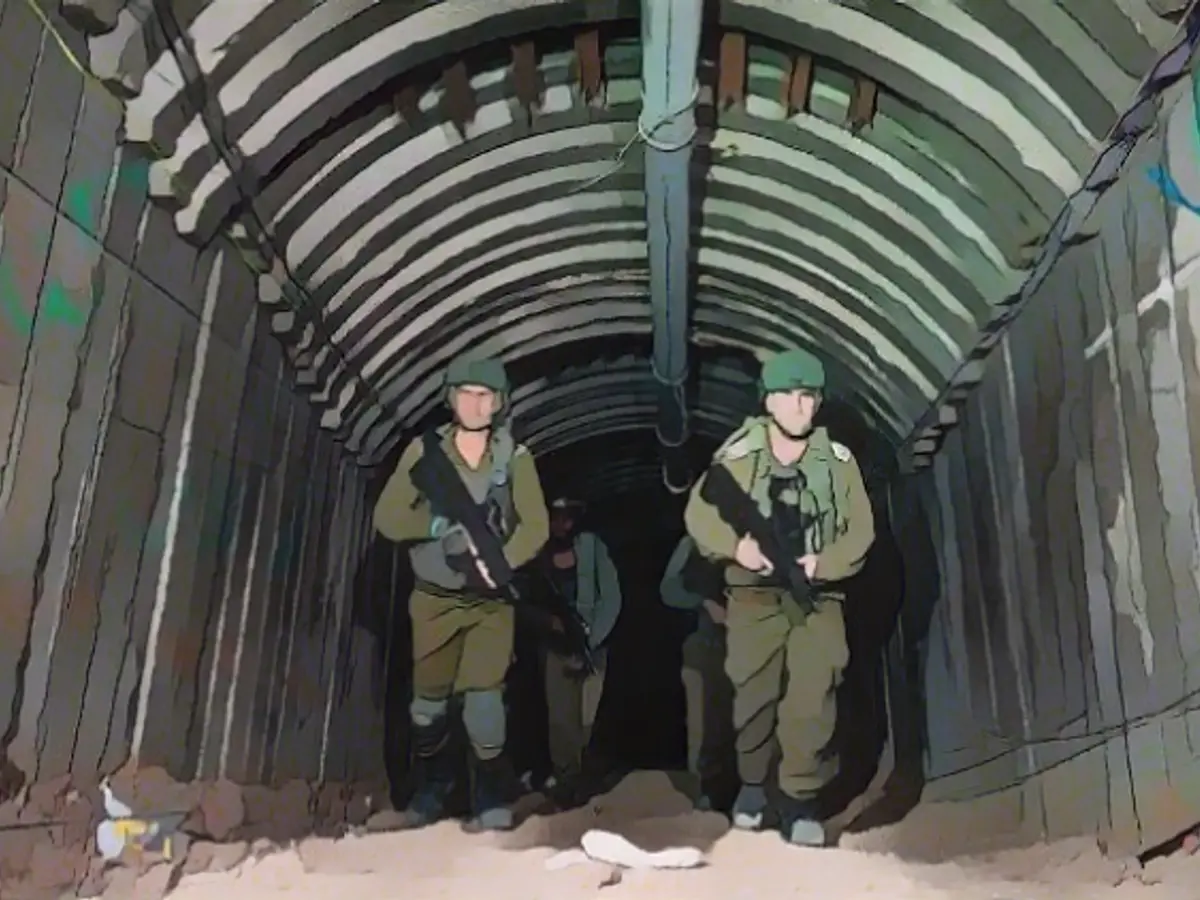Discovered Evidence Reveals Hamas's Decades-Long Preparation for Attack on Israel
In a shocking revelation, recently deceased Hamas members have provided evidence of years of intricate planning for a significant assault on Israel, raising questions about the Israeli security forces' apparent lack of awareness or dismissal of this looming threat.
Israeli Intelligence's Blind Spot
The Levels of Precision and Preparation
Hamas's meticulously planned attack, as shown in seized documents and seized technology, included detailed target sketches, extensive weapon lists, and schedules.
"The level of intricacy and advance preparation was what shocked us the most," an intelligence officer revealed to journalists. Two anonymous intelligence sources shared the findings during a press conference, revealing that terror instillation and chaos were the primary attack objectives.
The substantial data collected from mobile devices, computers, tablets, GPS devices, action cameras, maps, and notebooks served as an overwhelming piece of evidence for years of planning against Israeli bases and kibbutzim.
Amshat Taskforce's Reactions
Reactivating Amshat Unit
In response to the wealth of information, Israel reactivated a military intelligence force called Amshat to probe the full extent of data discovered. The dedicated team of analysts combed through the vast volume of Arab documents and decrypted millions of electronic data.
Their findings painted an ominous picture: Hamas had constructed a comprehensive battle plan with precise targets.
Focus on Nahal Oz Military Outpost
The attacked targets included the Nahal Oz military outpost, for which Hamas had prepared detailed tactical plans. This military installation was also a target for kibbutzim attacks, as metadata and images from Hamas fighters’ personal devices confirmed.
Hamas Kidnapping Protocols
"Hostage response training" included kidnapping techniques for adults, as instructed in checklists and language guides. Hostages were to be tied and blindfolded. Those causing problems were to be eliminated or neutralized with force.
Hamas Motives Revealed
The New York Times suggested that Hamas intentionally escalated the conflict with their October 7 attack in the hope that violence would revive the Palestinian cause and rally the Arab world against Israel. This tactic so far has generated mixed results.
Failures of Israeli Authorities
The fact that Hamas had planned the attacks for years raises concerns about the apparent intelligence failures within the Israeli security forces.
In December, intelligence services reportedly acquired an outstanding planned Hamas attack, similar to the October 7 operation, over a year before it was executed. The intelligence service, however, deemed the scenario unlikely.
Investigations have also uncovered further details; a detailed map of the southern Gaza Strip revealed unknown Hamas military installations, and images of tunnels within the Gaza Strip were discovered, including over 500 kilometers of interconnected tunnels.
Hidden Obstacles to Israeli Intelligence
Intelligence Services' Warning Ignored
Separate sources appear to have conveyed to Israeli intelligence that Hamas was planning a significant operation against Israel, which was largely disregarded.
Hardwired Communication
Hamas devised methods of avoiding surveillance by utilizing hardwired phone lines within their tunnel network, keeping their communications secret.
Cultural Conformity
Within the Israeli Defense Force (IDF), the prevailing culture of conformity may have discouraged dissent, impacting the intelligence response.
Functionality Limitations
Unfortunately, simulated exercises suggested that the IDF's Gaza division response would be inadequate, while resources were cut back on monitoring Hamas activities, effectively allocating more attention to managing rocket sites.
Though the evidence paints a horrifying picture of years of meticulous planning and preparation for a devastating attack against Israel, these obstacles and issues may have played a role in the Israeli security forces' seemingly delayed response to the emerging threat.
Sources:
Enrichment Data
- Hamas utilized hardwired phone lines within their tunnel network to avoid surveillance, effectively keeping their communications a secret.
- A culture of conformity within the Israeli Defense Force (IDF) may have discouraged dissent and impacted the intelligence response.
- Simulated exercises of possible Hamas attacks found the IDF's Gaza division's response lacking.
- Funding and manpower dedicated to monitoring Hamas activities were reduced, causing them to focus primarily on tracking potential threats.
Enrichment Data: Hamas implemented a multifaceted strategy for attacking Israel, combining tactical planning, intelligence gathering, and operational secrecy. Here are the essential components:
- Intelligence Gathering
- Border Defenses: Hamas extensively studied Israel's border defenses, documenting construction methods, electronic surveillance systems, and the thickness of the concrete security barrier[2].
- Visual Intelligence: Hamas infiltrated Israeli territory to gather footage of security forces near the border[2].
- Cyber Breach: Hamas allegedly obtained classified documents from Israel's Unit 8200 by conducting a cyber breach, integrating the findings into their strategic plans[2].
- Operational Planning
- Continuous Meetings: Urgently called emergency meetings were convened by Hamas military leadership starting on October 1, 2023, to finalize attack plans and set the timeline[2].
- Command Centers: In the 24 hours leading up to the attack, Hamas connected its command centers to the main operations room and deployed units[2].
- Precise Execution Commands: On October 5, 2023, an original operation order signed by Mohammed Deif outlined precise execution commands and set the "zero hour" at 6:30 AM on October 7[2].
- Misdirection and Secrecy
- Public Misdirection: Hamas released misleading public videos of their militants preparing to attack Israel and planed assaults, possibly to create a false narrative[4].
- Operational Secrecy: Hamas kept the exact timing of the attack a closely guarded secret, ensuring success through strict operational secrecy[2].
- Internal Factors in Israel
- Intelligence Dismissal: Israeli intelligence initially dismissed Hamas’s preparations as a drill or defensive measures, rather than a full-scale attack[3][4].
- Cultural Conformity: The prevailing culture of conformity within the IDF discouraged dissent, affecting the intelligence response and promoting a toxic atmosphere where questioning command was met with apprehension[4].
- Reduced Resources: The IDF had reduced funds and manpower dedicated to observing Hamas activities, focusing primarily on rocket sites and neglected Hamas training and army movements[4].
These factors contributed to Hamas's ability to plan extensive attacks on Israel without being detected by Israeli intelligence, with internal issues within the IDF playing a role in the apparent delayed response to emerging threats.








